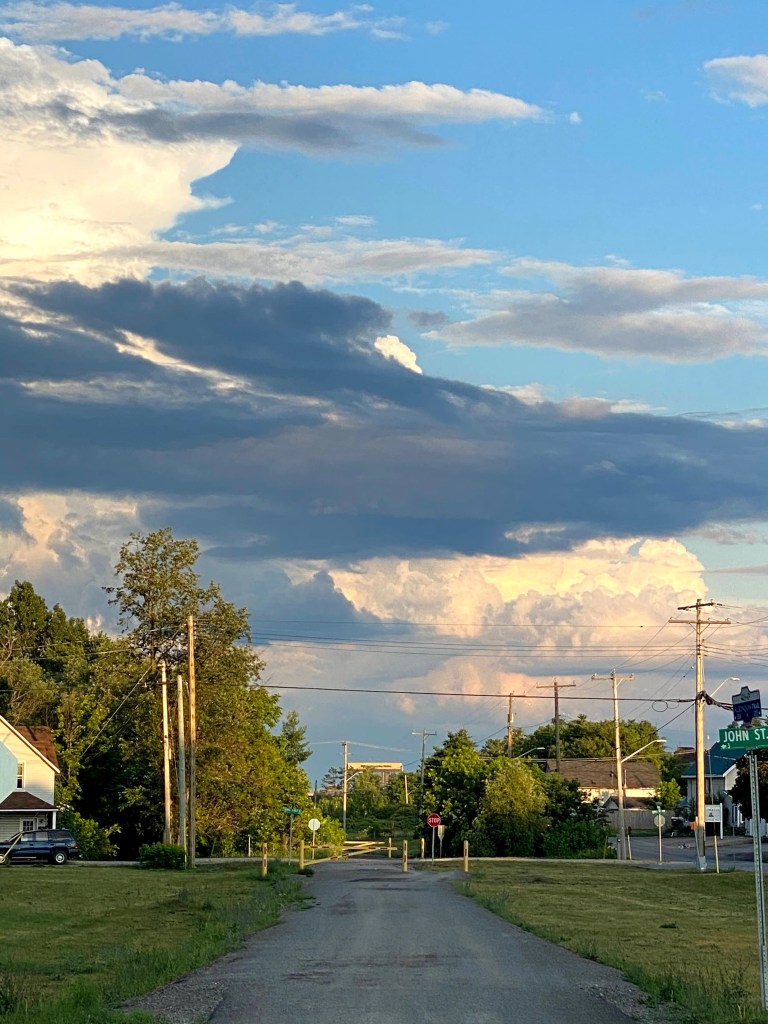
Jesus identifies himself with a gate. The word, ‘gate’, appears several times in this Gospel text today.[1] Unlike “bread”[2], “light”[3], “vine”[4]—all natural and organic analogies created by God— “gate” is the only “I am” saying by Jesus in the New Testament that is built by human hands.
That’s significant. Because unlike bread, light or a plant a gate is not meant to be the central focus of what is going on around it. A gate is merely a way through on a journey or intention that begins before approaching it and leads to somewhere else after leaving it. It is functional, serving a larger purpose.
It is meant to be experienced. You experience passing through a gate, and what it signifies: a means to an end, a transition from one place to another. Today we receive an image to help us move into places of resurrection.
During the Easter season we consider being the presence of the living Christ to the world today. We hear the Easter message of new life in the conclusion of this Gospel text today; Jesus came so that “we may have life and have life abundantly.”[5]
A biblical professor of mine from my seminary days talked about it this way: The bouncing ball over time. The ball starts its journey by being dropped to the earth.
God, in a sense, takes this direction or movement — first down:
“Christ Jesus, who, though he was in the form of God, did not regard equality with God as something to be exploited but emptied himself, taking the form of a slave, being born in human likeness. And being found in human form, he humbled himself, and became obedient to the point of death—even death on a cross.”[6]
That’s downward movement. The first trajectory of the divine movement comes down to earth. And it is on the ground that the first disciples witness and experience the human Jesus for the first time in history, in first century Palestine.
As time moves forward, the ball then goes up, up in the air, off the ground and into the realm of abstract analogies, mental constructs, images, metaphors. The ball is flying in the air, to the degree that it is now our minds that must re-present Jesus who is no longer in the flesh, on the earth, a human being.
But do these analogies leave us ‘up in the air’? Does Jesus remain merely an abstract notion? When Jesus says, “I am the gate” he’s also the “true vine”, the “light of the world”, the “good shepherd”[7], the “resurrection and the life”[8], the “way, truth and the life”[9] and, “the bread of life” as well. It’s not the image or metaphor that is the most important; it is the person of Christ it points to.
The gate image, because it is a thing, reminds us that Jesus must become real to us again today, in the flesh, in our experience. The ball will land, must land, on the ground again.
In other words, we are free to ‘see’ Christ in others and in the world today. We have to understand our context, too, for the message of Christ to have life. We don’t live in 1st century Palestine. And, to be fair, we no longer live in an agrarian-based society, as it was in the ancient world when the bible was first written down.
In the middle of the 19th century, 84 percent of Canadians lived in what we would define as rural areas. But today, almost two centuries later, it is flipped: Some 82 percent of all Canadians live in cities. For the vast majority of Canadians today, agrarian images no longer carry the same weight, as far as meaning goes.
So, what would a contemporary gate look like today? Not a gate in the country, let’s say, but a gate in the city. A city gate?
When we consider gates in our backyards – the chain link fences dividing up suburbia – but also the gates keeping a city safe – checkpoints, guard houses, toll stations, prisons, the locks on the Rideau Canal. One thing about these city gates are that they are not constructed to be easily crossed, whether we are talking about regulating water flow, children playing in the yard, border crossings or prisoners in jails. It’s not a walk in the park.
Also, it takes time going through gates today. In fact, these city gates require significant effort. Procedures. Passcodes. Keys. Questions. And hopefully the right answers. Going through some gates can pose a threat, even present a degree of danger.
The term ‘gatekeeping’ today is intimidating. It suggests the role of being a bouncer at the door—asking for credentials or proof to those wishing to enter, testing the veracity of the traveller’s claims. I think we live in a world today where gates are built to make it harder to open than to close. To open them takes more effort and time.
Among people of faith, too, I think we are tempted to keep Jesus inside. And so we close the gates of our hearts, and the gates—physical and mental—that keep matters of faith preserved. The result of this strategy, sadly, is to exclude, control and/or force everyone ‘inside’ to conform.
But Easter changed all that. Easter means that Jesus is alive, not dead. Easter means that Jesus has gone into the world, and lives in every corner of it. Easter has opened the gate, so that Christ is released out there.
While modern city gates are normally designed to control or stem traffic flow, the gate of Jesus is easily opened. More often than not, it’s stuck open. It’s harder to close it than it is to open it. Jesus’ gate is more about a free flow of traffic in and out. Whoever enters by me will be saved and will come in and go out and find pasture.[10]
The community, the reign, the shepherding of Christ if you will involve relationships defined by the grace, freedom and love of God—the freedom for welcome, acceptance, and even the freedom to leave. This freedom of movement from outside to inside and inside to outside is the open-door policy of God’s reign.
When the church remains a place where all people are free to come and to go, we remain true to Christ who is this gate, who is this place of transition. It might not always be easy to go through either way, because of the blocks we create, we place on ourselves. But Jesus doesn’t block the way. When we would rather close the gate, Jesus opens it. The One who is the gate is faithful and beckons us through to the fullness, the abundance of life beyond.
[1] John 10:1-10
[2] John 6:35-48
[3] John 8:12; 9:5
[4] John 15:1-5
[5] John 10:10
[6] Philippians 2:5-8
[7] John 10:11-14
[8] John 11:25
[9] John 14:6
[10] John 10:9




